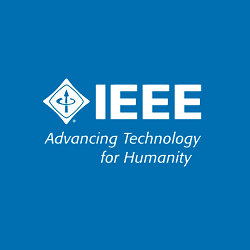دانلود ترجمه مقاله ساختارهای مشارکتی و مراجع و مقامات تصمیم گیری گروهی با پلتفرم تصمیم گیری مشترک
| عنوان فارسی مقاله: | پلتفرم تصمیم گیری مشترک برای ساختارهای مشارکتی و مراجع و مقامات تصمیم گیری گروهی |
| عنوان انگلیسی مقاله: | COLLABORATIVE DECISION – MAKING PLATFORM FOR PARTICIPATORY STRUCTURES AND GROUP DECISION- MAKING BODIES |
| دانلود مقاله انگلیسی: | برای دانلود رایگان مقاله انگلیسی با فرمت pdf اینجا کلیک نمائید |
| تعداد صفحات مقاله انگلیسی | ۱۰ صفحه با فرمت pdf |
| تعداد صفحات ترجمه مقاله | ۱۶ صفحه با فرمت ورد، به صورت تایپ شده و با فونت ۱۴ – B Nazanin |
| ترجمه جداول و اشکال | در این فایل، متون داخل جداول به صورت کامل ترجمه شده است. |
| رشته های مرتبط | مدیریت و اقتصاد |
| کلمات کلیدی | سیستم های پشتیبان تصمیم گیری گروهی، پلتفرمهای مشترک، ساختارهای مشارکتی، مراجع و مقامات تصمیم گیری گروهی |
فهرست مطالب:
چکیده
۱ مقدمه
۲ تحلیل سیستم های پشتیبان تصمیم گیری گروهی
۳ ملاحظات و نکات مربوط به توسعه مدل جدید پلتفرم های مشترک یکپارچه شده (ادغام شده) با ویژگیهای GDSS
۴ نتایج
بخشی از ترجمه:
۴٫ نتایج
در سازمان هایی که کارهای مدیریت مشارکتی، خواه رسماً تنظیم شده باشند ( هیئت مدیره، کمیته های اجرایی، هیئت های مدیریت و…) یا در ساختارهای غیر رسمی یافت شده باشند(گروههای کاری، گروههای توسعه، تیم های پروژه و…)، مدل پیشنهادی کاربرد وسیعی دارد. اجرای سیستم GDSS امکان ساخت پایگاه داده مهارت جهت مدیریت متخصصین متعدد درگیر درگروه تصمیم گیری، در مراحل مختلف ( شناسایی آلترناتیوهاو راهکارهای تصمیم گیری، ارزیابی تصمیمات آلترناتیو، انتخاب آلترناتیو یا راهکار تصمیم گیری بهینه ) و مکانیزمی برای ساختار بندی و رده بندی گروههای تصمیم گیری فراهم می آورد.پارامترسازی فرایند تصمیم گیری از طریق مدلسازی الگوریتم های خاص مطابق با مشخصات تصمیمات ( فراوانی، فاز، اهمیت تصمیم، تعداد تصمیم گیرندگان، اهمیت تصمیم گیرندگان و… ) امکان کنترل هر چه بیشتر روابط مدیریت را فراهم آورده و در همان زمان شرایطی جهت کاربرد درست اصل تفویض اختیار خلق می کند. ازطریق سیستم شاخص های عملکرد نظیر محک های یکپارچه شده یا تلفیق شده با مدلی که ارزشهایش به صورت خودکار در برنامه کاربردی محاسبه می شود،و با فراوانی مشخص و قطعی، عملکرد سیستم تصمیم گیری گروهی در سازمان منتقل می شود.مدیریت ارشدفرصت نگاه کردن به ارزشهای فعلی، توسعه و هماهنگی با استانداردها برحسب محک های زیر را دارد: شاخص بهره وری تصمیم گیری متوسط(متوسط بهره وری تصمیم گیری)، شاخص رضایتمندی تصمیم گیرندگان یا نرخ جذب تکنیک های مدیریت مشارکتی.
بخشی از مقاله انگلیسی:
۱٫ INTRODUCTION The approach of group decisions from the perspective of their development by using remote communication technologies and GDSS tools, has its origins in the mathematical theory of communication, namely the first mathematical model that describes the operation of a communication system, related with a set of rules and instruments which can be used as an analytical tool of the behaviours of group decision bodies (Shannon, 1949). Shannon is a linear model, constitute of three components: a transmitter (source), a communication channel and a receiver (destination), including also the mechanisms of encryption and decryption of information. By interpreting communication channel components, given a group decision and considering the source that transmit information to other members of the group, with a certain rate and a set of probabilities that govern the frequency of their occurrence, we can put the issue of the amount of information needed to be produced by such a process. Therefore, we can consider that an important part of a successful group decision-making techniques is given by their capacity to produce ideas, some of them even under very restrictive conditions related to the time factor (Cioc, 2008). 32 Cioc M.-M. COLLABORATIVE DECISION – MAKING PLATFORM FOR PARTICIPATORY STRUCTURES AND GROUP DECISION – MAKING BODIES Business Excellence and Management Volume 2 Issue 1 / March 2012 At the same time, given the fact that information changes the uncertainty of the receiver, preferably by reducing the uncertainty, we can conclude that in practice, information content can be measured through uncertainty. Uncertainty status was defined (Chaitain, 2003) as that situation where there are several variants of realization of an event and we do not know which of these will be followed. It is intuitively obvious that, with increasing the number of alternatives considered by a group decision making, falling in the set S (denoted by |S|), the uncertainty grows. In a group decision process, we can consider that we need at most n tests in order to find the optimal alternative, where 2 n=m,, which means that n = log2 m It follows that, given a system S with |S| possibilities, we can describe the amount of uncertainty h (|S|) by the formula h (|S|) = log |S| (Chaitain, 1992). The uncertainty analysis is related to the concept of entropy, which is related to a given decision situation, at different stages of the group decision process. This correlation allows estimation of risk associated with a particular decision, and also the selection of relevant information, thereby countering the effects of group thinking, which describe the situation where the desire to reach a consensus is more powerful than the motivation to investigate, in a realistic manner, all the rational decision alternatives (Janis, 1977). By the evaluation of uncertainty and entropy, it can also be optimised the multi-criterial problems related to group decisions, which occurs when choosing a decision alternative is achieved by considering simultaneously several objectives, which are often contradictory. In such situations one can distinguish two types of decision problems (Philip, 2002), respectively problems with limited number of discrete alternatives (multi-attribute decisions) and problems with continuous spectrum of alternative (generated by an algorithmic mechanism for identifying and evaluation of decision alternatives), which give rise to multiple objective decisions.
| عنوان فارسی مقاله: | پلتفرم تصمیم گیری مشترک برای ساختارهای مشارکتی و مراجع و مقامات تصمیم گیری گروهی |
| عنوان انگلیسی مقاله: | COLLABORATIVE DECISION – MAKING PLATFORM FOR PARTICIPATORY STRUCTURES AND GROUP DECISION- MAKING BODIES |




